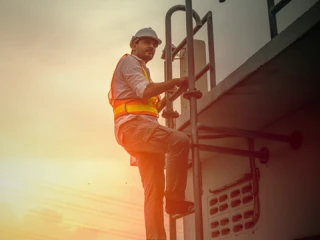Safety monitoring: “a task more suited to the right machine”
Workplace safety is the number one priority for manufacturing companies. “Knowing where people are in facilities is crucial – not just because people could be in danger, but also to ensure the safety of firefighters and other first responders in the case of an emergency,” Wouter explains.
Our customer was relying on a basic electronic system that counted every time a laser beam at foot level was interrupted by a person passing through it. Wouter: “There’s an obvious blind spot here – the system gets confused when two or more people walk through at the same time or pass in and out of the zone by wandering around its boundary. To solve that problem, they had somebody monitoring the zone via camera.”
Time-consuming, repetitive, manual tasks like screen monitoring require lots of focus over a long period of time and can lead to fatigue and human error. “It’s definitely a task more suited to the right machine, which can efficiently support the human monitor,” Wouter asserts. “It was up to the delaware and Robovision team to develop and train that machine.”




/Website_Landingpage_new_DataAnalytics_1920x355-(1).webp?mode=autocrop&w=320&h=240&attachmenthistoryguid=f7c84915-cf28-4a9d-83a0-ba3a7f12e562&v=&focusX=557&focusY=151&c=d62544587aa601fd6356e8e13a967670c5729116d101f7e9a52bb095c3b63d68)